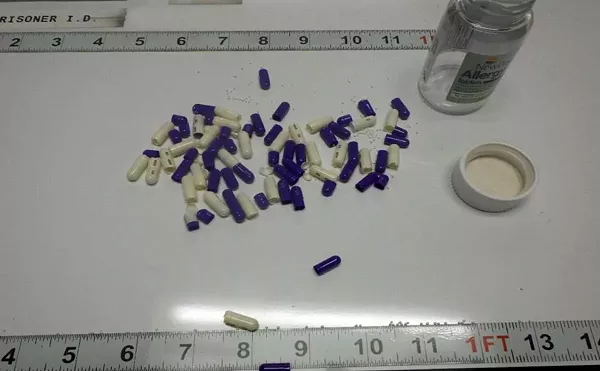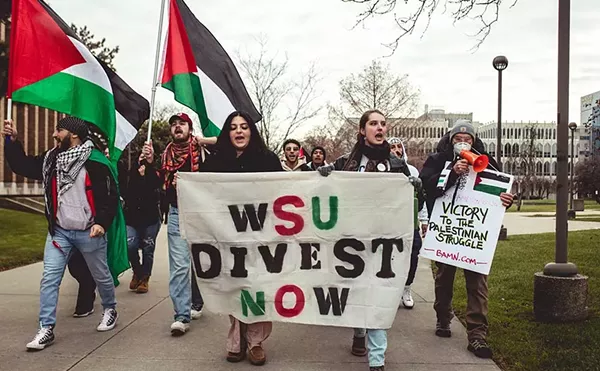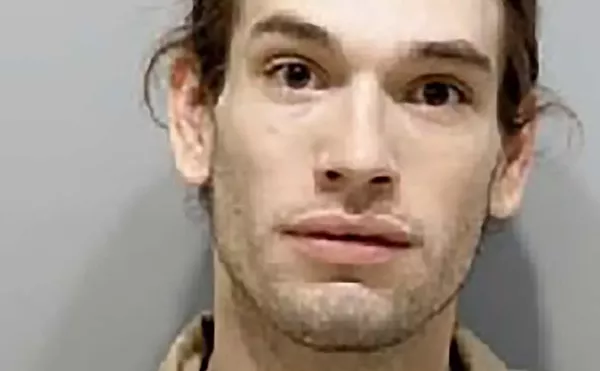
Audio By Carbonatix
[
{
"name": "GPT - Leaderboard - Inline - Content",
"component": "35519556",
"insertPoint": "5th",
"startingPoint": "3",
"requiredCountToDisplay": "3",
"maxInsertions": 100,
"adList": [
{
"adPreset": "LeaderboardInline"
}
]
}
]
Until 1956, Metro Detroit maintained a world-class streetcar system. Then, on April 8 of that year, the last train would roll down Woodward Avenue; soon after the system's tracks were ripped up in 1956. Some transit advocates consider that as destructive as Detroit's 1967 riots.
Last month, about three-hundred people gathered inside the banquet room of Ford Field in Detroit to ask how to build mass transit again. It’s been gone so long that it feels brand new. They applauded the M-1 Rail project, a 3.3-mile streetcar line that's, ironically, being constructed right now along Woodward Avenue. And they praised the passage of a state bill that authorized the creation of the Regional Transit Authority (RTA), an agency that officials say will work to create efficiencies in the region's transit systems.
But the RTA is two years old now, with its only acquisition being a recently- hired chief executive officer. And M-1 will only run between Grand Boulevard and Congress Street. In Detroit, problems with transit are substantial: For the Detroit Department of Transportation (DDOT), service has been cut in half over the past decade; for the Suburban Mobility Authority for Regional Transportation (SMART) bus system has been cutback by about 20 percent. That means more than 100,000 DDOT riders and 50,000 SMART riders need help with their daily lives now. Now.
According to the Brookings Institution in Washington, D.C., Detroit has the highest level of job sprawl in the country. In a nutshell: Your house is too far from work. As far too many know: if the bus made you an hour late, you're at risk of losing your job. And it’s not even the bosses fault. But there is something the boss can do.
The Harriet Tubman Center, a non-profit group with offices in the old Kresge Building next to the Masonic Temple, spent months planning this mere two-hour event. They called it Build Business/Build Transit. Marie Donigan, who carried the torch for transit when she represented Royal Oak in the Michigan House of Representatives, was the chief organizer.
Spiritual assistance came from pastors and a couple of rabbis who encircled the room, right hands above their heads, palms pushing outward. The Reverend Louis Ott of the Birmingham Congregational Church presided.
“We are those who will choose to build or not to build a transit future with economic promise," Ott said. "We all are the champions called to this task today and in the days, months and years ahead.”
Ott represents the Metro Coalition of Congregations. It grew out of the Tubman Center. Transit is a social justice issue. Some consider it a human rights issues. Others, like Dennis Cowan, the former mayor of Royal Oak and current partner in the law firm of Plunkett Cooney, say they’ll make the business case for transit.
Cowan and five others involved in planning the event stood up in the front to face the room. “We’re going where the money is,” said Cowan. “We’re going to the banks.” The audience cheered.
Transportation planners think in decades. So regional voters need to know now that, in the November 2016 election, they’ll be asked to throw in money for public transit. But even before that, transit organizers need money to launch a ballot campaign to ask the voters. No money, no campaign. No campaign, and no one cares about transit.
According to Jason Jordan, director of the Center for Transportation Excellence in Washington, D.C., and a main speaker last week at Ford Field, a cheap campaign would be $500,000. Otherwise count on a couple million.
Raising property taxes has been the most successful strategy around the country, Jordan said. Say you own a $200,000 house and you already pay $5,000 a year in taxes. Would you agree to pay an extra $200 a year for a transit system that you might not ever use? That's the question some voters will be forced to face.
Transit advocates will try to convince you it’s worth it because your $200 will bolster the economy and get your friends and neighbors better jobs. “At the end of the day,” said Jordan, “you have to convince people to pay.”
During the 2014 fiscal year, the state spent more than $3 billion on transportation, of which only $281 million went to public transit. Highways got nearly all the rest. Last month, the Michigan Senate passed a bill to add $1.2 billion a year for road repairs. Under that bill, however, public transit will get a paltry increase.
Still, the new CEO of the RTA, Michael Ford, feels positive about garnering an affirmative vote. Ford, 52, is an African-American and longtime transit professional. He spent most of his life in Seattle and Portland before running the Ann Arbor Transit Authority for five years. This spring, he managed to get Washtenaw voters to approve higher taxes to support public transit in the region, with more than 70 percent of voters signing off on the plan. In 18 months, Ford will have to do it again, except this time in more tax allergic counties.
Ford will have to get the head of DDOT, Dan Dirks, who was in the room, and the head of SMART, John Hertel, who was not in the room, to coordinate their services. Ideally, they would become employees of the RTA, one transit system. During his speech at the transit event, Ford made mention of the region's ugly past when it comes to transit:
“Things don’t always have to be the way they are," Ford said. "We can work together.”





